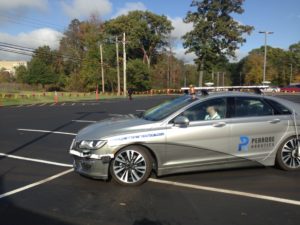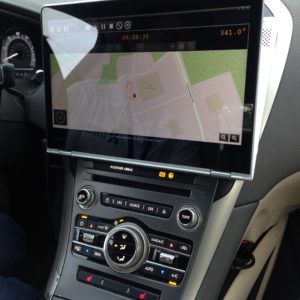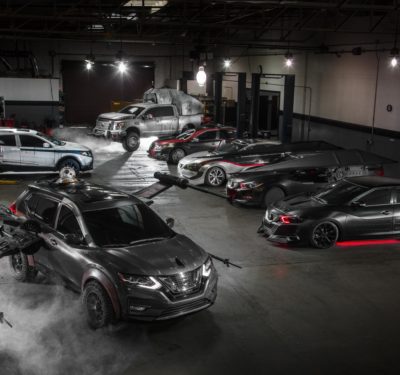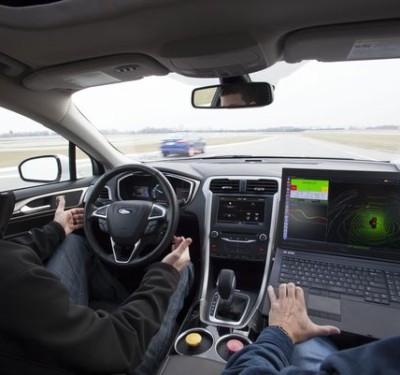
Perrone Robotics provided autonomous vehicle test drives at the event. Photo by Stan Goff.
While many of you are now aware of SAE International’s standard J3016 levels of driving automation, the Pittsburgh-based global association is still striving for additional awareness for both these new standards as well as a variety of programs and policies set up to enable SAE to serve as the technical and standard development resource for the future of autonomous vehicles.
As the ultimate knowledge source for automotive, aerospace and commercial vehicles, SAE has developed the six levels of driving automation (Levels 0 to 5). Supporting this leadership position, the organization held an event – Pathway to Autonomy – earlier this month to showcase resources available to the mobility industry.
“The work and guidance our committees, members and staff are developing for autonomous vehicles within the various sectors of mobility engineering effect the safety, manufacturing and ultimately consumer acceptance of this technology around the globe,” said David Schutt, CEO. “With the headquarters in the Pittsburgh region, these efforts will have both direct economic impact as well as national and global impact through future developments of this vital and useful technology.”
The event, held at SAE’s facility in Warrendale, Penn., featured vehicles and drones on display, as well as demonstrations of how software advances and a variety of GNSS technologies are paving the way toward a future of evolving autonomous vehicles.
Companies at the event included:
- Perrone Robotics — which provided autonomous vehicle test drives
- Chevrolet — which presented a Chevy Bolt showcasing the status of electric vehicles; the vehicle was donated by General Motors to a team of engineers who will compete in the AutoDrive Challenge
- SkEyes Unlimited — which provided demonstrations on its LiDAR and 3D mapping technology
- Kettering University, Flint, Mich. — which showcased their student developed vehicles including those submitted for Formula SAE; the engineer students will be participating as one of eight teams chosen for the AutoDrive Challenge
Inside Unmanned Systems attended the “Pathway to Autonomy” Media Day on Oct. 10 and even rode in the autonomous vehicle provided by Perrone Electronics. The vehicle featured many of today’s top technologies, including Velodyne LiDAR, NovAtel GPS antennas, and an Applanix inertial measurement unit in the trunk.

A look inside the autonomous car at SAE’s media day. Photo by Stan Goff.
One goal of the event was to take a glimpse into the technology that drives autonomous vehicles, but another focus was to educate attendees about SAE International’s “Levels of Autonomy” (J3016) and how they are helping to set the industry standard. A new Senate bill directs the Secretary of Transportation to reference SAE International’s standard “J3016: Taxonomy and Definitions for Terms Related to Driving Automation Systems for On-Road Motor Vehicles” in all future policies, documents and rule-making.
J3016 was adopted by NHTSA for us in its “Federal Automated Vehicles Policy.” The document provides and defines the six levels of driving automation, from no automation to full automation. Consistent with industry practices, the standard helps to eliminate confusion by providing clarity and is frequently cited and referred to by industry and media.
“One of the main things we do here is develop technical standards for the mobility industry. We have developed and maintain over 35,000 standards,” Schutt said while kicking off the event. “Everything from our car brakes to de-icing fluids on airplane wings. We’re very proud of that history and we do that with thousands of engineers from around the world.”
Schutt added that SAE will continue to play a critical role in developing safety standards for autonomous vehicles.
“One of the key enabling things for autonomous cars, connected vehicles, is technical standards,” he said. “Engineers looking at and developing the technologies and the protocols by which this will all take place. We work very closely with automotive companies as well as governments from around the world.”






